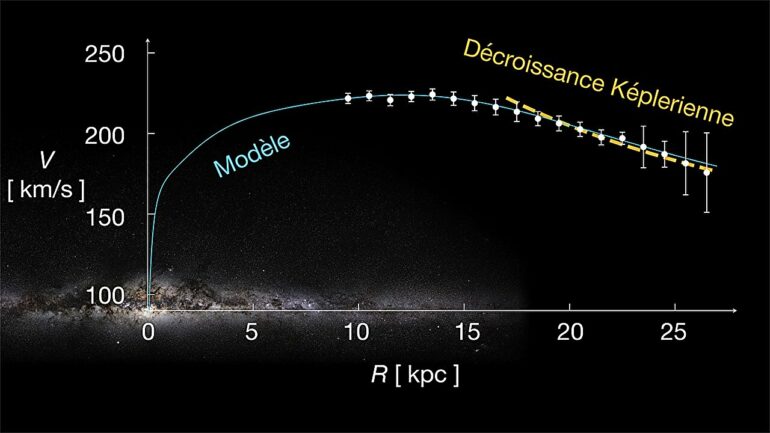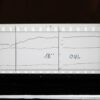Thanks to the latest Gaia satellite catalog from the European Space Agency (ESA), an international team led by astronomers from the Paris Observatory–PSL and the CNRS has achieved the most accurate measurement of the mass of the Milky Way. This study opens important questions in cosmology, particularly on the amount of dark matter contained in our galaxy.
The total mass of the Milky Way is estimated to be only two hundred billion times that of the sun (2.06 x 1011solar masses), marking a significant downward revision—approximately four to five times lower than previous estimates.
This new value was derived from the third data release of the Gaia catalog published in 2022, which provides comprehensive data for 1.8 billion stars, encompassing all three spatial components and three velocity components in a six-dimensional space within the Milky Way.
The bearable lightness of the Milky Way
Using the Gaia data, scientists were able to construct the most accurate rotation curve ever observed for a spiral galaxy, in this case our own galaxy, and deduce its mass. Prior to Gaia, obtaining a robust rotation curve for our galaxy was challenging, unlike the case for external spiral galaxies. This challenge stemmed from our position within the Milky Way, which made it impossible to precisely distinguish the motions and distances of stars in the galactic disk.
In their study published on September 27, 2023, in the journal Astronomy and Astrophysics, scientists found the rotation curve of our galaxy is atypical: unlike those determined for other large spiral galaxies, it is not flat.
On the contrary, at the outskirts of the disk of the galaxy, this curve begins to decrease rapidly, following the prediction known as the Keplerian decline.
Questioning cosmology
Obtaining a rotation curve for the Milky Way that exhibits a Keplerian decline necessitates situating our galaxy within a cosmological framework.
Indeed, one of the major breakthroughs in modern astronomy was the realization that rotational velocities of the large disks of spiral galaxies were much faster than what would be expected from a Keplerian decline. In the 1970s, astronomers Vera Rubin, who used observations of ionized gas, and Albert Bosma, who studied neutral gas, demonstrated that the rotation speed of spiral galaxies remains constant, well beyond their optical disks.
The immediate consequence of this discovery was the proposition of the existence of dark matter —additional to observable matter—distributed in a halo surrounding the disks of spiral galaxies. Without this dark matter, the rotation curves would have followed a decline called “Keplerian.” The latter indicates the absence of significant amounts of matter outside the optical disk.
More information:
Y.-J. Jiao et al, Detection of the Keplerian decline in the Milky Way rotation curve, Astronomy & Astrophysics (2023). DOI: 10.1051/0004-6361/202347513. On arXiv: DOI: 10.48550/arxiv.2309.00048
Citation:
The revisited mass of the Milky Way is much smaller than expectations from cosmology (2023, September 27)



